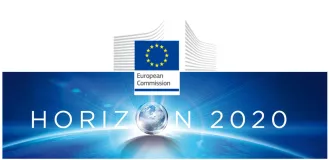INCOMES
Relevant project information
Dates
Project website
Role of CIRCE
Grant agreement number
Funded by

Description and objectives
InComEss seeks to develop efficient smart materials with energy harvesting and storage capabilities that combine advanced polymer-based composite materials.
This is a new single/multi-source concept to harvest electrical energy from mechanical energy and/or environmental sources of waste heat.
The project will demonstrate its applicability in key sectors and applications, SHM and vehicle monitoring in automotive, aerospace and construction, presenting the highest market potential.
3 cost-effective and eco-friendly configurations of energy harvesting systems (EHS) will be realized by combining high performance piezoelectric (PE), thermoelectric (TE) and thermoPiezoelectric (TPE) generators and monolithic supercapacitors (SC) to power selected wireless sensor nodes to be implemented in different IoT scenarios for Structural Health Monitoring (SHM) in buildings and aircraft and precise location and monitoring of vehicles through GPS and MEMS sensors.
Value proposition
- Develop advanced lead-free PieZoElectric (PZE) composites containing piezoelectric nanoparticles of BaTiO3 or ZnO embedded in a low dielectric polymer matrix, to achieve piezoelectric voltage coefficient values above 250 mV m N - 1 in piezoelectric ceramic composites fabricated in the form of films and fibers
- Develop high efficiency and high performance py n-type polymer composites with enhanced thermoelectric (TE) characteristics, leading to Seebeck coefficients above 70 V / K along with a maximum power factor of 8 W / (m ∙ K2), over an operating temperature range up to 350°C maximum, by using innovative electrically conductive polymer composites (CPC) and intrinsically conductive polymers (ICP).
- Develop SuperCapacitors (SC) composites based on high power and energy density polymers with higher capacitances above 400 F / g along with high energy densities of approximately 2 Wh / kg, combining pseudocapacitive materials and graphitic carbon structures such as graphite nanoplatelets (GNP).
Project partners
AIMEN, IPF, CENTI, NANOCYL, SMART MATERIAL, TAMPERE UNIVERSITY, FORTH, SKELETON TECHNOLOGIES, BRUNEL UNIVERSITY LONDON, UNIVERSITY OF PADOVA, PHOTONFIRST, CORE, MARELLI, SONACA, ICCS, CIRCE, UNE, FOCCHI


